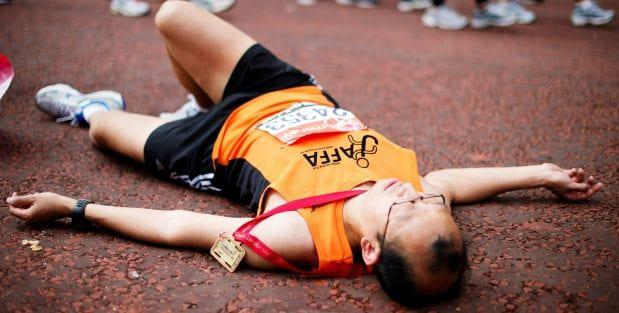Having run a few marathons myself, I've always been interested in what the body actually goes through when running the historic distance of 26.2 miles. We all know running such a distance puts our bodies under a high amount of pressure and strain. Our glycogen stores will be exhausted, lactic acid will have built up in our muscles, we will have sweat liters of water and salt and our muscles will be sore.
I found the following information on Competitor.com to be very interesting. Here is what they said:
Muscles, tendons, ligaments, and almost every physiological system is challenged when running a marathon. It doesn’t matter if you crushed your goal or struggled to walk/jog to the finish, 26.2 miles is a long way to go and your body endures tremendous physical duress, even if you don’t feel sore immediately afterward. Here are some of the scientifically measured physiological systems that are impacted after running 26.2 miles.
Skeletal Muscle
One scientific study looked at the damage done to the calf muscles during a marathon and concluded that both the “intensive training for, and the marathon itself, induce inflammation and muscle fiber necrosis that significantly impaired muscle power and durability.”
This study makes it clear that your muscles are undoubtedly weakened and need extensive recovery before returning to full training. Given this study also examined calf muscles during an extended training block, the need for downtime applies to any arduous training segment.
Cellular Damage
Cellular damage post-marathon is best measured by the presence and production of creatinine kinase (CK) — a marker that indicates damage to skeletal and myocardial tissue — and increased myoglobin levels in the blood stream.
One study concluded that CK damage persisted more than seven days post-marathon while another study discovered the presence of myoglobin in the bloodstream for 3-4 days post race. Both of these studies clearly indicate that the body needs rest after a marathon to fully recover from the cellular damage caused during the race.
Unlike muscle soreness, these markers of hard training and racing aren’t always noticeable. This is why you need to take downtime after a marathon, even if you don’t feel sore.
Immune System
Finally, studies have shown that the immune system is severely compromised after running 26.2 miles, which increases the risk of contracting colds and the flu.
A suppressed immune system is one of the major causes of overtraining. Therefore, skipping a much-needed rest period could lead to interrupted training down the road, which could significantly derail your long-term goals.
Anecdotal Evidence From Elite runners
While scientific evidence helps support training assumptions, perhaps the most obvious example of the importance of taking downtime is exhibited by elite runners. Elite runners are advised by the best coaches in the world and their livelihood depends on consistent training and racing.
Professional runners who make their living running races still take downtime after marathons and long training segments. Olympian Desiree Davila, and all members of the successful Hansons-Brooks Distance Project, take a fairly significant rest period after marathons. In a recent interview, Davila mentioned that she took two weeks off and then two weeks very easy after finishing second at the Olympic Trials.
